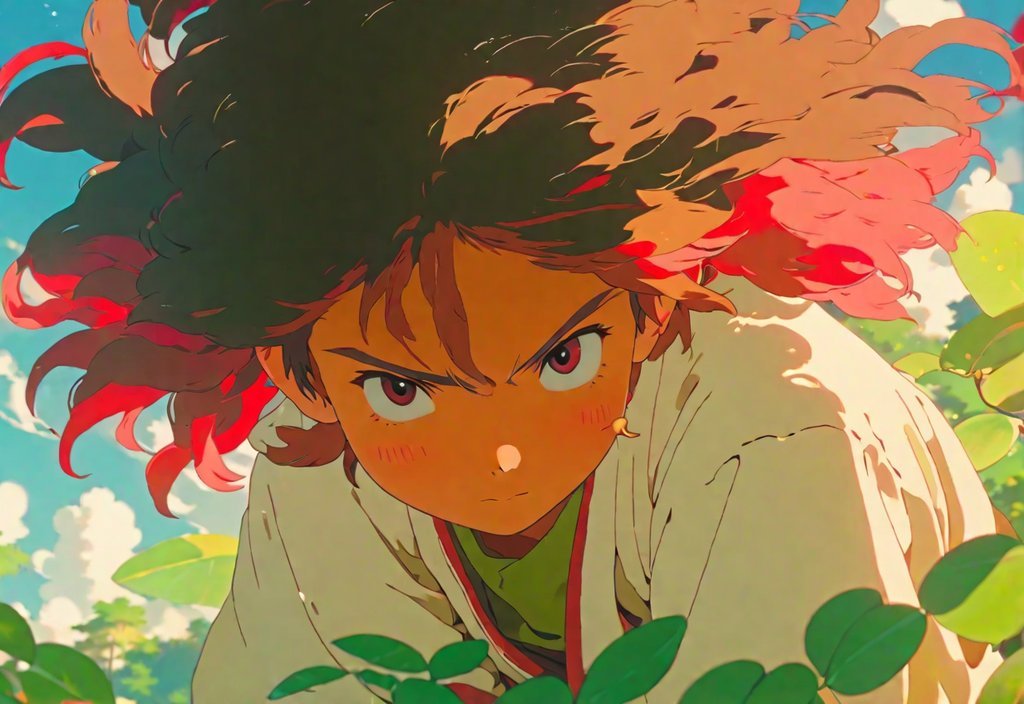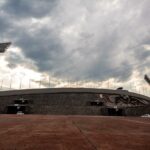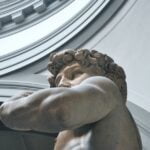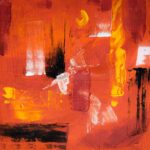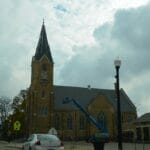Discover the captivating world of Raphael, a revered master artist whose life and works have left an indelible mark on the art world. In this article, we delve into the lesser-known aspects of Raphael’s life and artistry, shedding light on intriguing facts that will surely captivate your imagination. From his early years as a prodigious talent to the profound influence he had on Renaissance art, prepare to be enthralled by the fascinating journey of this artistic genius. Join us as we unravel the enigmatic story of Raphael and explore the remarkable masterpieces he created.
Key Takeaways:
- Raphael was often seen as a rival to Michelangelo, adding an intriguing aspect to their artistic legacies.
- Raphael had a close relationship with both Pope Julius II and Pope Leo X, working on important projects for them.
- Raphael’s workshop in Rome housed at least fifty students and assistants, contributing to his reputation as a prolific artist.
- In various religions, Raphael is known as an archangel associated with healing.
Raphael Interesting Facts

Rivalry with Michelangelo
One of the most intriguing aspects of Raphael’s life was his rivalry with Michelangelo[^1]. These two great artists of the Renaissance were often seen as competitors, with Michelangelo even accusing Raphael of plagiarizing his work. This rivalry adds an exciting layer to their artistic legacies and sparks curiosity about their interactions and the influence they had on each other’s creations.
Close association with Popes
Raphael had a close relationship with two influential popes of his time, Pope Julius II and Pope Leo X[^1]. These popes recognized Raphael’s talents and patronized him, providing him with important projects, including frescoes in the Vatican. This association not only elevated Raphael’s status but also allowed him to leave a lasting mark on the world of art through his commissioned works.
Workshop in Rome
Raphael’s large workshop in Rome played a significant role in shaping his artistic success[^1]. This workshop served as a hub for at least fifty students and assistants, contributing to the production of numerous artworks. The collaborative atmosphere fostered creativity and allowed Raphael to establish himself as a prolific artist with an extensive body of work.
Archangel Raphael
In addition to his artistic accomplishments, Raphael is also recognized as an archangel in various religions[^2]. The name “Raphael” holds significant meaning, translating to “It is God who heals” and “God, Please Heal.” Celebrated on feast days in September and October, Raphael is associated with acts of healing, embodying a spiritual and compassionate aspect that adds depth to his artistic legacy.
These fascinating facts about Raphael’s life and artistry offer a glimpse into the complexities and influences that shaped his remarkable career. From his riveting rivalry with Michelangelo to his close connections with popes, these insights shed light on the multifaceted nature of an artist whose impact still resonates today.
For more information about Raphael and his incredible contributions to the art world, visit Ducksters.com for a comprehensive biography or Kids.kiddle.co for insights into his role as an archangel.
If you’re curious about fascinating facts about zoology, explore our page on facts about zoology to uncover intriguing information about the animal kingdom.
Delve into the world of finance and discover surprising banker facts on our page dedicated to banker facts. Prepare to be amazed by the intriguing insights into the banking industry.
Are you a car enthusiast? Unleash your passion by learning some mind-blowing facts about a Lamborghini. Get ready to be amazed by the speed and luxury of these iconic vehicles.
Calling all cat lovers! Dive into the world of feline wonders and explore our page on facts about male cats. Uncover fascinating details about their behavior, traits, and more.
Discover captivating insights into the life and works of Raphael, one of the most celebrated artists of the Renaissance. Explore our page on interesting facts about Raphael to gain a deeper understanding of this artistic genius.
The Vatican Stanze: Exploring Raphael’s Masterpieces
- Raphael’s Rooms in Vatican Museums | Ultimate Guide & Facts
Raphael, also known as Raffaello Sanzio da Urbino, was an Italian painter and architect of the High Renaissance who left behind many artworks despite his untimely death at the age of 37. A significant number of his works can be found in the Vatican Palace and Villa Farnesina in Rome.
The Raphael Rooms, also known as the Stanze, were located in the Pontifical Palace in the Vatican City and were chosen by Pope Julius II della Rovere for official ceremonies and personal use.
Room of Constantine: A Marvelous Unfinished Creation
The Room of Constantine was specifically designed for official ceremonies and was decorated by Raphael’s school based on the artist’s drawings. Unfortunately, Raphael passed away before its completion. The room features stunning frescoes, including “The Vision of the Cross,” “The Battle of Milvian Bridge,” and more, all of which were completed by Raphael’s students, showcasing their remarkable talent.
Room of the Segnatura: Where Raphael’s Genius Shines
The Room of the Segnatura is famous for its frescoes that brought Raphael widespread recognition. Considered one of his masterpieces, this room showcases the artist’s early works. The breathtaking frescoes, such as “The School of Athens” and “The Triumph of Religion”, reveal Raphael’s unparalleled ability to combine classical themes with contemporary ideas, making his vision truly extraordinary.
Room of Heliodorus: A Testament to Divine Intervention
The Room of Heliodorus was initially used for private audiences with the Pope. It features four episodes from the Old Testament on the ceiling, created by Raphael’s workshop. These frescoes depict divine interventions, such as “The Expulsion of Heliodorus from the Temple”, “The Miracle of Bolsena”, and more, emphasizing Raphael’s mastery in capturing the intensity and drama of these sacred stories.
To learn more about Raphael’s Rooms and plan a visit, it is recommended to visit the official website of the Vatican Museums[^1^]. The website provides comprehensive information about the history and significance of the rooms.
Another valuable resource to explore is The Geographical Cure’s guide to the Raphael Rooms in the Vatican Museum[^2^]. The website offers detailed information and facts about each room and its artworks, making it an excellent reference for delving deeper into this artistic marvel.
Key Takeaways:
– Raphael’s Rooms, also known as the Stanze, are located in the Vatican Palace and Villa Farnesina in Rome.
– The Room of Constantine showcases stunning frescoes completed by Raphael’s students.
– The Room of the Segnatura is famous for Raphael’s iconic frescoes, including “The School of Athens.”
– The Room of Heliodorus features frescoes depicting divine interventions from the Old Testament.
– To plan a visit, the official website of the Vatican Museums provides comprehensive information on Raphael’s Rooms.
– The Geographical Cure’s guide offers detailed facts and insights into each room and its artworks.
References:
[^1^]: Raphael’s Rooms – Musei Vaticani
[^2^]: Guide To the Raphael Rooms in the Vatican Museums – The Geographical Cure
Portraits and Commissions
Raphael, often regarded as one of the greatest masters of the Italian Renaissance, was celebrated not only for his mastery of art but also for his diverse body of work. Among his notable contributions were his stunning portraits and commissions, which showcased his exceptional talent and skill in capturing the essence of his subjects. Let’s explore some fascinating facts about Raphael’s remarkable works in the realm of portraits and commissions.
Raphael: A Master of Portraiture
One of the remarkable aspects of Raphael’s artistic repertoire was his ability to breathe life into his subjects through his portraits. With a keen eye for detail and an innate understanding of human anatomy, he was able to create lifelike and emotive representations that truly captured the essence of the individuals he portrayed.
Interesting Fact #1: Diverse Range of Subjects
Raphael’s portraiture encompassed a wide range of subjects, from noble patrons and influential figures to members of the clergy and even himself. His ability to adapt his style to suit the unique characteristics of each individual made his portraits highly sought after and celebrated.
Interesting Fact #2: The Pope’s Favorite Portraitist
Raphael’s exceptional talent as a portraitist did not go unnoticed, particularly by the influential figures of his time. Pope Julius II, impressed by Raphael’s artistic prowess, appointed him as his favorite portraitist. This esteemed position gave Raphael the opportunity to create numerous iconic portraits of the pope, further solidifying his reputation as a master artist.
Interesting Fact #3: Unveiling Inner Personalities
In his portraiture, Raphael went beyond just capturing the physical likeness of his subjects. He delved deeper, striving to reveal the inner personality and character traits of the individuals he depicted. This added depth and complexity to his portraits, making them truly captivating and thought-provoking.
Raphael’s Magnificent Commissions
In addition to his groundbreaking portraiture, Raphael was widely recognized for his impressive commissions. These projects allowed him to showcase his artistic vision and talent on a grand scale, leaving a lasting impact on the art world.
Interesting Fact #1: Raphael and the Vatican
Raphael’s close association with the Vatican brought forth numerous significant commissions. Pope Julius II and Pope Leo X both patronized Raphael, providing him with important projects that allowed him to create some of his most iconic works. His commissions for the Vatican gave him the chance to demonstrate his mastery of composition and storytelling in large-scale frescoes.
Interesting Fact #2: The Raphael Rooms
Among Raphael’s most renowned commissions are the frescoes in the Raphael Rooms, located within the Vatican’s papal palace. These exquisite works of art showcase Raphael’s exceptional talent in creating visually stunning compositions that narrate stories and convey profound messages.
Interesting Fact #3: Fusion of Portraits and History
Raphael’s commissions went beyond mere decoration; they often blended portraiture with historical and mythological narratives. This fusion of themes allowed him to create multidimensional artworks that not only captured the likeness of his subjects but also conveyed deeper meanings and allegorical interpretations.
Key Takeaways:
- Raphael was a master of both portraiture and commissions, showcasing his exceptional talent and artistic vision.
- His portraits went beyond capturing physical likeness, revealing the inner personalities of his subjects.
- Raphael’s portraits encompassed a diverse range of subjects, from noble patrons to clergy members.
- The pope recognized Raphael as his favorite portraitist, further elevating his status as a master artist.
- Raphael’s commissions for the Vatican, including the frescoes in the Raphael Rooms, allowed him to demonstrate his mastery of composition and storytelling on a grand scale.
- His commissions often fused portraiture with historical and mythological narratives, creating multidimensional artworks.
Sources:
- My Modern Met. “8 Interesting Facts About Raphael, Master of the Italian Renaissance.” Available at:
- Encyclopedia Britannica. “Raphael | Biography, Artworks, Paintings, Accomplishments.” Available at:
Impact and Legacy
Raphael, the renowned artist of the High Renaissance, has left an indelible mark on the art world. Through his innovative techniques and captivating compositions, he revolutionized painting styles and inspired generations of artists. Let’s explore the impact and legacy of this artistic genius.
Legacy in Painting Styles
Raphael’s artistic vision went beyond his time, influencing painters well into the 20th century[^3^]. He embraced Mannerism, a style that emerged during Italy’s Baroque period. Through this shift in style, Raphael demonstrated his ability to adapt and inspire new artistic movements. His legacy lives on in the works of countless painters who have been inspired by his innovative techniques and harmonious compositions.
Pioneering Efforts in Printmaking
Not only was Raphael a master painter, but he also made significant contributions to the world of printmaking. He was one of the first artists to explore this medium, paving the way for future artistic innovations[^2^]. His pioneering efforts in printmaking played a crucial role in shaping the modern conception of the artist.
Emotional Themes and Realistic Emotions
Raphael’s ability to convey realistic emotions through his paintings revolutionized the art world[^3^]. He painted emotional themes with such skill that viewers were transported into the world of his subjects. This emotional connection captivated audiences and forever changed the way people experienced art.
Key Takeaways:
- Raphael’s legacy extends beyond his lifetime, influencing painters well into the 20th century.
- He played a pioneering role in the world of printmaking, contributing to the emergence of the modern conception of the artist.
- Raphael’s paintings revolutionized the art world through his masterful portrayal of realistic emotions and captivating themes.
[Citations]
– Daily History – Raphael’s Contributions
– Biography.com – Raphael’s Biography
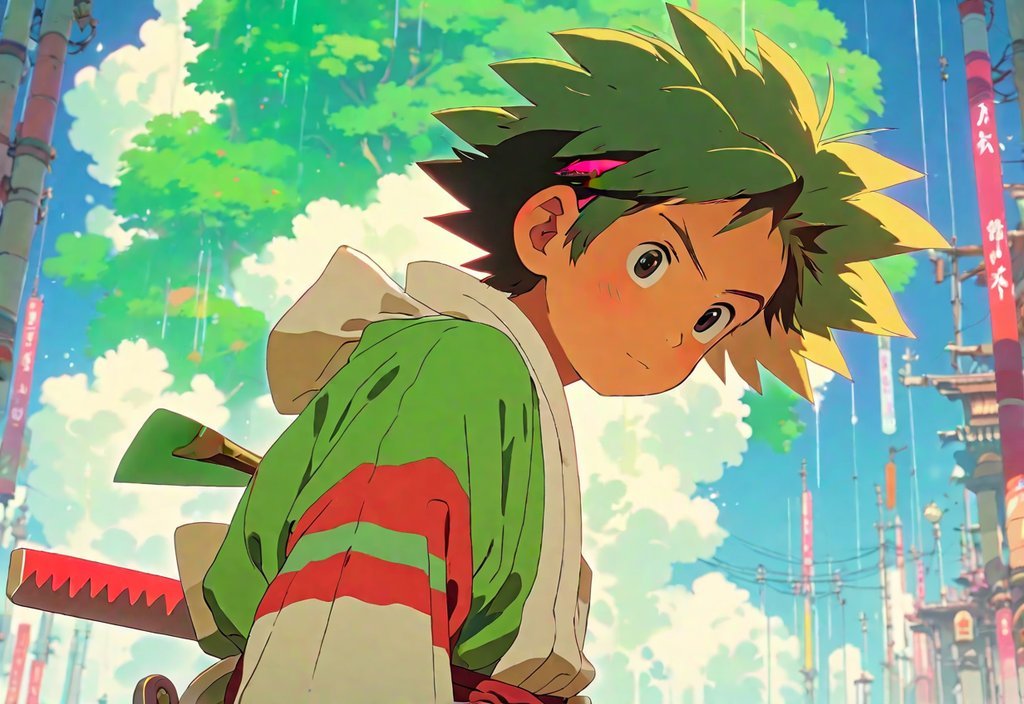
FAQ
Q1: What were the major artistic rivalries Raphael faced during the Renaissance period?
A1: Raphael was often seen as a rival to Michelangelo, and their rivalry is well-documented. Michelangelo believed that Raphael plagiarized his work, adding an intriguing aspect to their artistic legacies.
Q2: How did Raphael’s association with popes contribute to his artistic career?
A2: Raphael had a close relationship with both Pope Julius II and Pope Leo X. He was patronized by these popes and worked on several important projects for them, including frescoes in the Vatican.
Q3: How did Raphael’s workshop in Rome contribute to his reputation as an artist?
A3: Raphael had a large workshop in Rome that housed at least fifty students and assistants. This workshop played an instrumental role in producing a large number of his artworks and contributed to his reputation as a prolific artist.
Q4: What is the significance of Raphael being known as an archangel?
A4: In various religions, Raphael is known as an archangel who performs acts of healing. The name Raphael means “It is God who heals” and “God, Please Heal.” He is celebrated on feast days on September 29 and October 24.
Q5: Where can I learn more about Raphael’s Rooms in the Vatican Museums?
A5: To learn more about Raphael’s Rooms and plan a visit, it is recommended to visit the official website of the Vatican Museums. The website provides comprehensive information about the history and significance of the rooms. Additionally, The Geographical Cure’s guide to the Raphael Rooms in the Vatican Museum offers detailed information and facts about each room and its artworks.
- Discover Gueydan, Louisiana: Duck Hunting, Cajun Culture, and Southern Charm - November 21, 2024
- Discovering Viburnum, MO: Ozark Charm, Natural Beauty, and Small-Town Heritage - November 21, 2024
- Discover Pardeeville, WI: A Peaceful Village with Vibrant Charm - November 21, 2024
